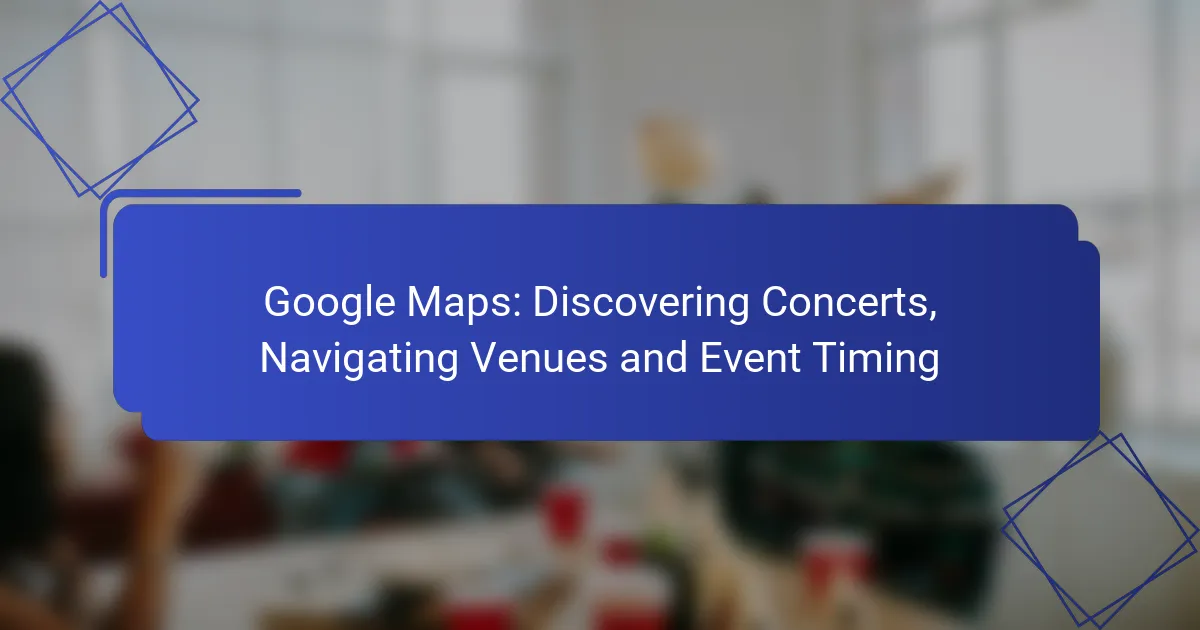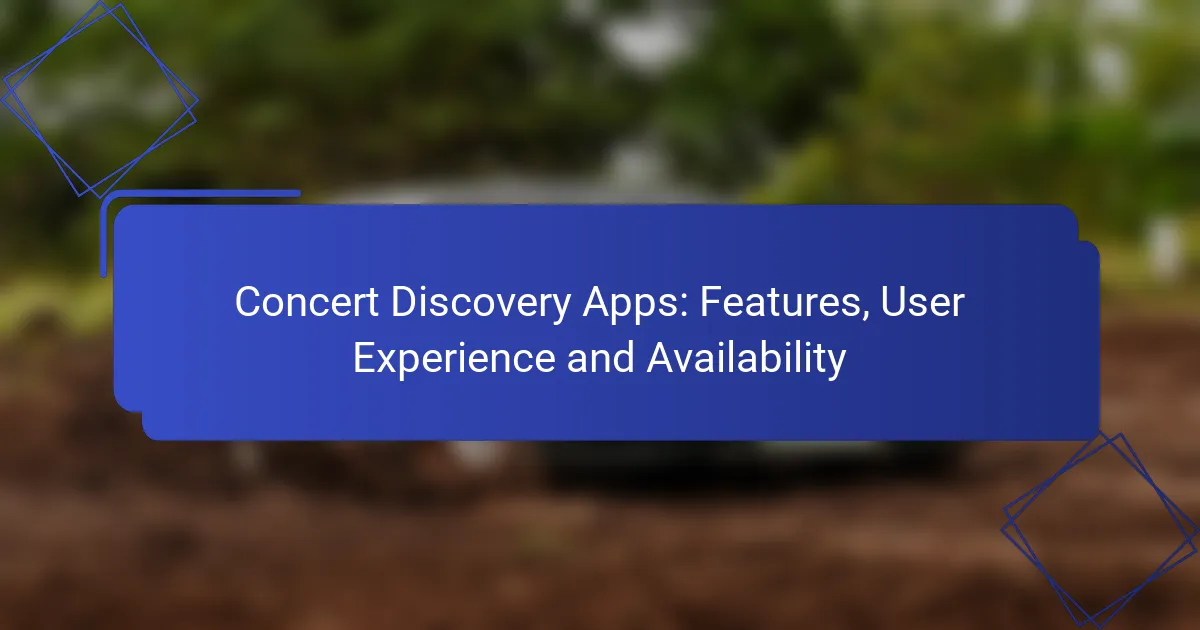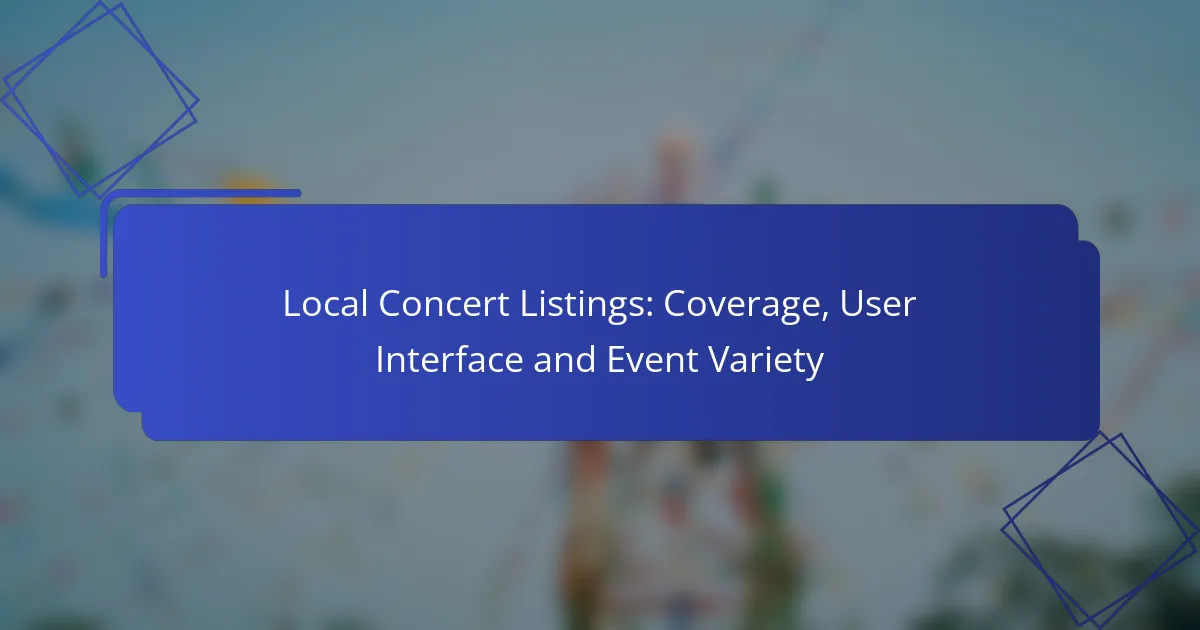Google Maps is a powerful tool for discovering concerts, allowing users to search for events by location, date, and category. With detailed directions and real-time updates, navigating to venues becomes effortless. Additionally, by understanding venue schedules and factoring in travel time, attendees can ensure they arrive on time to fully enjoy their concert experience.
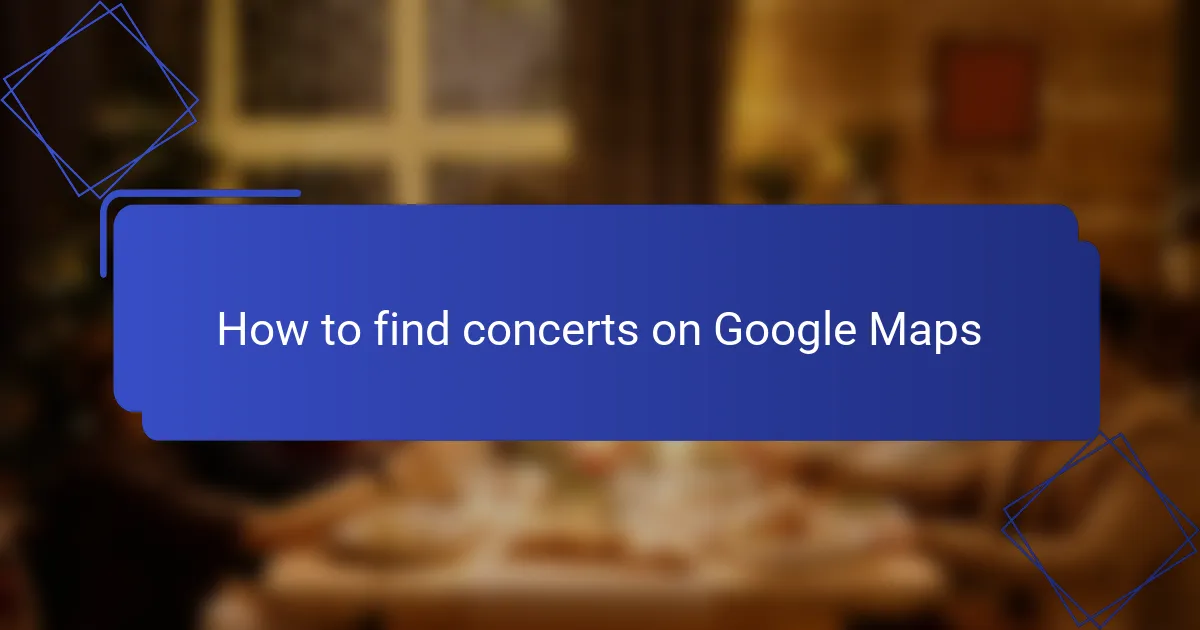
How to find concerts on Google Maps
You can easily find concerts on Google Maps by searching for specific locations, filtering by date, and using event categories. This tool helps you discover live music events happening nearby, making it simple to plan your outings.
Search by location
To search for concerts by location, enter a city or venue name into the Google Maps search bar. The map will display various locations, including concert venues, where events are scheduled. Zooming in on specific areas can help you find nearby concerts more effectively.
Consider using the “Nearby” feature to explore concerts happening close to your current location. This is particularly useful when traveling or if you want to discover spontaneous events without extensive planning.
Filter by date
Filtering by date allows you to see concerts happening on specific days. After searching for a location, click on the “Events” tab and select your desired date range. This feature is beneficial for planning outings around your schedule.
Keep in mind that popular concert dates may sell out quickly, so check for availability as soon as possible. Setting reminders for ticket sales can help you secure your spot at sought-after events.
Use event categories
Google Maps offers event categories to help narrow down your concert search. You can filter results by genres like rock, pop, or classical, making it easier to find concerts that match your musical preferences.
Utilizing categories can enhance your experience by connecting you with artists and events you may not have discovered otherwise. Regularly checking these categories can keep you updated on upcoming concerts that fit your interests.

How to navigate to concert venues
Navigating to concert venues can be straightforward with the right tools. Google Maps offers detailed directions and real-time updates to help you reach your destination efficiently.
Get directions via Google Maps
To get directions to a concert venue using Google Maps, simply enter the venue’s name or address in the search bar. Once located, click on the “Directions” button and choose your mode of transport, whether driving, walking, or using public transit.
Google Maps provides estimated travel times and alternate routes, which can be particularly useful during peak hours. Make sure to check for any traffic updates that might affect your journey.
Explore nearby parking options
Finding parking near concert venues is essential for a smooth experience. Google Maps can help identify nearby parking lots or garages by searching for “parking” after locating the venue.
Consider the cost and availability of parking options. Some venues may have designated parking areas, while others might require street parking, which could be limited. Always check for any parking regulations or fees to avoid fines.
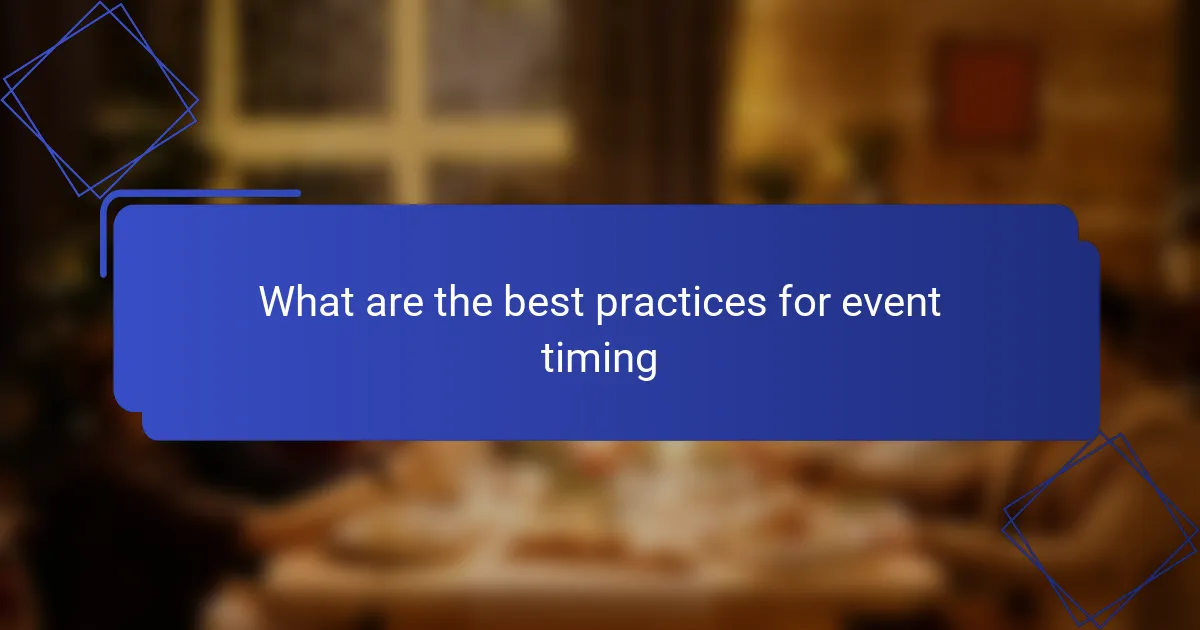
What are the best practices for event timing
Effective event timing involves understanding venue schedules and factoring in travel time. By coordinating these elements, attendees can ensure they arrive punctually and enjoy the full experience of the concert or event.
Check venue schedules
Before attending an event, always verify the venue’s schedule. This includes checking the start times, opening hours, and any potential delays or changes that may occur. Many venues provide updated information on their websites or social media channels.
Additionally, consider the duration of the event. Concerts can vary significantly in length, from short opening acts to lengthy performances. Knowing the expected end time helps in planning your departure and any subsequent activities.
Consider travel time
When planning to attend an event, account for travel time to the venue. Use Google Maps or similar navigation tools to estimate how long it will take to get there, factoring in traffic conditions and public transport schedules if applicable.
As a rule of thumb, aim to arrive at least 30 minutes early. This allows time for parking, security checks, and finding your seat. If you’re traveling from a distance, consider potential delays and plan accordingly to avoid missing the beginning of the event.
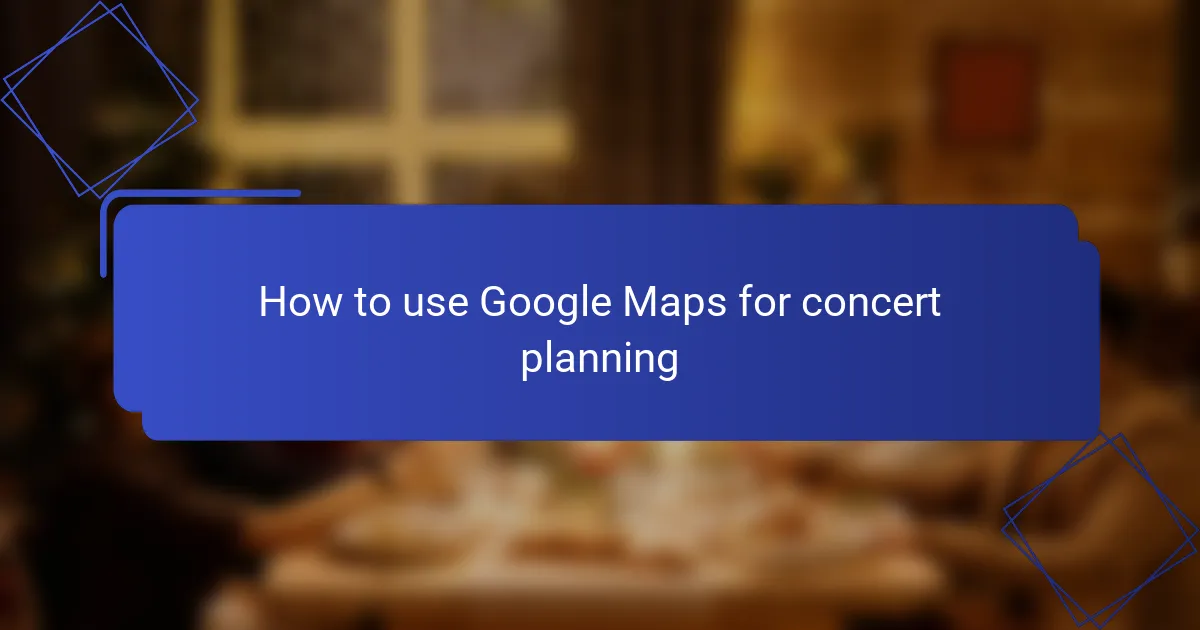
How to use Google Maps for concert planning
Google Maps can significantly enhance your concert planning by providing venue locations, event timings, and navigation options. By utilizing its features, you can streamline your experience from discovering concerts to arriving at the venue on time.
Create a personalized itinerary
To create a personalized itinerary for concerts, start by searching for upcoming events in your area using Google Maps. You can filter results by date and genre, allowing you to find concerts that suit your preferences. Once you identify the events you want to attend, save them to your Google account for easy access.
Consider including travel time and potential traffic conditions in your itinerary. Google Maps provides estimated travel durations, which can help you plan when to leave. For example, if a concert starts at 8 PM and you are 30 minutes away, aim to leave by 7:15 PM to account for any delays.
Share plans with friends
Sharing your concert plans with friends is simple using Google Maps. After creating your itinerary, you can share event details via email or messaging apps directly from the app. This feature allows your friends to view the concert location and timing, making coordination easier.
To ensure everyone is on the same page, consider creating a group chat where you can discuss logistics, such as carpooling or meeting points. This way, you can enjoy the concert experience together without any last-minute confusion.
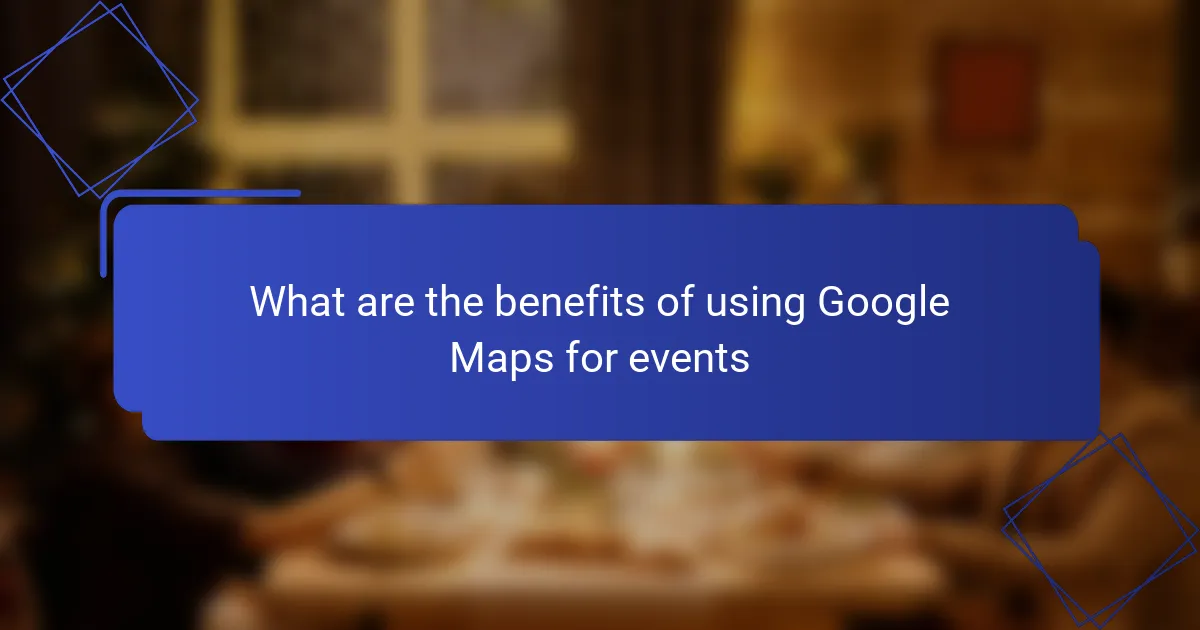
What are the benefits of using Google Maps for events
Google Maps offers several advantages for discovering concerts and navigating venues, including real-time traffic updates and access to user reviews. These features enhance the overall experience by helping users plan their trips efficiently and make informed decisions based on others’ experiences.
Real-time traffic updates
Real-time traffic updates on Google Maps allow users to see current road conditions, helping them avoid delays when traveling to events. This feature can provide estimated travel times that adjust dynamically based on traffic flow, ensuring that concert-goers arrive on time.
To make the most of this feature, check the traffic conditions before leaving and consider alternative routes if heavy congestion is reported. It’s also useful to set a departure time that accounts for potential delays, especially during peak hours or major events.
Access to user reviews
Access to user reviews on Google Maps enables attendees to gauge the quality of venues and events before making plans. Reviews often include insights about seating, acoustics, and overall atmosphere, which can be crucial for a satisfying concert experience.
When reading reviews, look for patterns in feedback rather than focusing solely on individual opinions. Pay attention to recent reviews for the most relevant information, and consider the number of reviews to assess the reliability of the ratings. This can help you choose venues that align with your preferences and expectations.

How to discover new music events in your area
Discovering new music events in your area can be easily achieved using various online tools and local resources. Google Maps, along with social media and community platforms, can help you find concerts and performances happening nearby.
Follow local artists
One effective way to stay updated on music events is to follow local artists on social media platforms like Instagram, Facebook, or Twitter. Artists often announce their upcoming shows and events directly to their followers, providing a first-hand look at what’s happening in your area.
Additionally, many artists share links to ticket sales or event pages, making it simple to purchase tickets or RSVP. Consider turning on notifications for your favorite artists to ensure you never miss an announcement.
Join community groups
Joining local community groups on platforms like Facebook or Meetup can be a great way to discover music events. These groups often share information about concerts, open mic nights, and music festivals happening in your area.
Look for groups that focus on local music scenes or specific genres you enjoy. Participating in discussions and asking for recommendations can also lead to discovering hidden gems and unique performances that might not be widely advertised.
